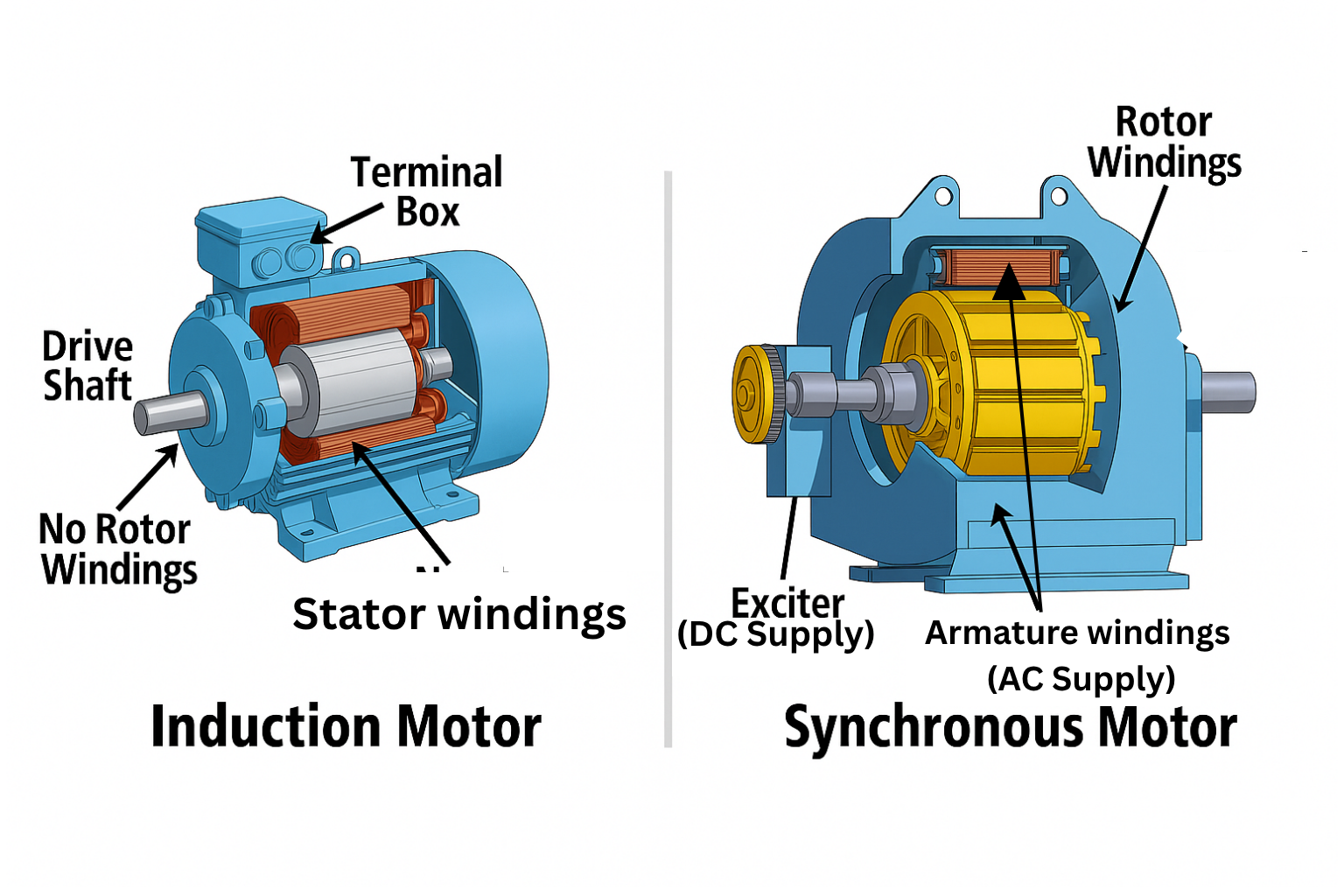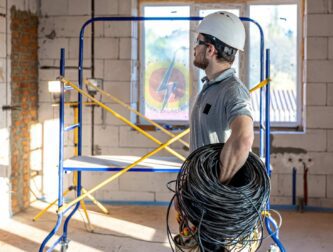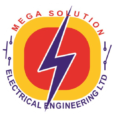Home / Blog Posts / Understanding Circuit Breaker Ratings: A Practical Guide
Whether you’re a student entering the world of electrical engineering or a homeowner curious about the safety of your electrical system, circuit breaker ratings are essential knowledge. These ratings help ensure that the right type of protection is in place to prevent electrical fires, equipment damage, or even electrocution. In this guide, we break down the most important labels you’ll see on circuit breakers and what they mean in real-world applications.
A circuit breaker is a safety device designed to interrupt the flow of electricity when there’s a fault such as an overload or a short circuit. It prevents damage to your electrical system by automatically “tripping” (turning off) under abnormal conditions.
This tells you the maximum current (in amperes) the breaker can carry continuously without tripping under normal conditions.
Example: If In = 32 A, it can handle up to 32 amps of current during regular use.
The maximum fault current the breaker can interrupt safely, even if it gets damaged in the process.
Example: Icu = 10 kA means it can interrupt a sudden fault current of up to 10,000 amps.
This is the maximum current the breaker can interrupt repeatedly without suffering damage. It is typically a percentage of Icu.
Example: If Ics = 7.5 kA, the breaker can handle 7,500 amps repeatedly.
This is the voltage level the breaker is designed to operate under.
Example: Ue = 230/400 V works for both single-phase and three-phase systems.
The highest voltage the insulation inside the breaker can withstand without breaking down.
Example: Ui = 690 V means it is well-insulated even for higher voltage systems.
Found on RCDs and RCBOs, this shows the earth leakage current level at which the breaker will trip.
Example: IΔn = 30 mA will trip the breaker if a person touches a live part and 30 milliamps flow to ground, helping to prevent electric shock.
Defines how fast the breaker trips in response to overcurrent.
| Type | Trips At… | Use Case |
|---|---|---|
| B | 3–5× In | Residential/light loads |
| C | 5–10× In | Motors, mixed loads |
| D | 10–20× In | High inrush devices (transformers, big motors) |
This shows the degree of protection the enclosure offers against dust and water.
Example: IP65 means it’s dust-tight and protected against water jets, ideal for outdoor use.
Understanding these ratings helps:
Choose the correct breaker for a residential, commercial, or industrial application
Prevent damage to wiring, machines, or electronic devices
Ensure the safety of occupants and technicians
Comply with electrical regulations and standards
You’re installing a circuit breaker for a small office air conditioner:
You select:
In = 20 A
Icu = 6 kA
Ue = 230V
Type C Curve (to allow slight inrush current)
This setup ensures the breaker can handle startup surges but still protect the circuit from overloads or shorts.
Whether you’re specifying circuit breakers for a job site or educating students on proper installation, knowing how to read and apply circuit breaker ratings is critical. These ratings are not just numbers—they are life-saving specifications that must be respected.
At Mega Solution Electrical Engineering Ltd, we provide expert advice and quality electrical components to match your project needs.
Contact us today for assistance with product selection, panel design, or training support
Trustindex verifies that the original source of the review is Google. I hired a licensed electrician from mega solution electrical in Kumasi, the service was done professionally and met all standards. It gave me peace of mind. I will recommend them to every bodyPosted onTrustindex verifies that the original source of the review is Google. They’re the best and most reliable electrical company in Ghana I’ll always recommend them to everyonePosted onTrustindex verifies that the original source of the review is Google. Thanks for solving our electrical problem so fast, coming all the way to Cantonments.Posted onTrustindex verifies that the original source of the review is Google. Mega Solution demonstrates exceptional expertise in genset systems. Their professionalism, technical proficiency, and industry experience set them apart. I highly recommend their services to anyone seeking reliable and knowledgeable partners in this field.Posted onTrustindex verifies that the original source of the review is Google. This best experience I had in a while, Richard provided all the help I was looking for. Thank you, this is a 10 Stars service!Posted onTrustindex verifies that the original source of the review is Google. Best electrical company in GhanaPosted onTrustindex verifies that the original source of the review is Google. Best Electrician in Ghana | best electrical engineer at good location | over 30 years experience | good electrical service. Thank you so much. I’m very happyPosted onTrustindex verifies that the original source of the review is Google. Wonderful work you have to try
When searching for a reliable electrician, call us at +233 24 415 1232 We specialize in electrical repairs, indoor and outdoor lighting installations, panel upgrades, and even hot tub wiring!
No matter urgent any electrical repairs seem, it’s never okay to attempt to handle them on your own. Trying to take care of electrical problems without professional training is extremely dangerous. If you or someone else aren’t hurt during your attempt, there’s still a chance that you’ve left something undone that poses a huge risk to you, your home, or your family. In fact, faulty electrical wiring is the number one cause of house fires in the United States, according to the National Fire Protection Agency. So in order to make sure that your home is safe, always rely on Certified Electrician for any electrical services.
Our electrical wiring electrician in Accra, Ghana know what a hassle any electrical problems can be, which is why we’ll always respond to any requests for service as quickly as possible. And because all of our technicians are licensed, background checked, and professionally trained, you’re guaranteed to receive the best quality service and workmanship available when you call us. We can assist with all your electric needs including:
| M | T | W | T | F | S | S |
|---|---|---|---|---|---|---|
| 1 | 2 | 3 | 4 | |||
| 5 | 6 | 7 | 8 | 9 | 10 | 11 |
| 12 | 13 | 14 | 15 | 16 | 17 | 18 |
| 19 | 20 | 21 | 22 | 23 | 24 | 25 |
| 26 | 27 | 28 | 29 | 30 | 31 | |

Learn how to read and understand circuit breaker ratings like In, Icu,

Discover the key differences between synchronous and induction motors.

What safety measures you need to put in place in your industry and why

As energy bills continue to soar, households and businesses alike are

Dreaming of a Career as an Electrician in Ghana? Here's How to Make It

Characteristics of Top Electricians Before starting your search, it's


Great guide on understanding circuit breaker ratings! This article clearly explains how to select the right breaker for different applications, which is crucial for both safety and efficiency. I’ve personally found that using high-quality products, like CNC breakers, ensures reliable performance and long-term durability. Highly informative and practical!
CNC Electric, Thanks